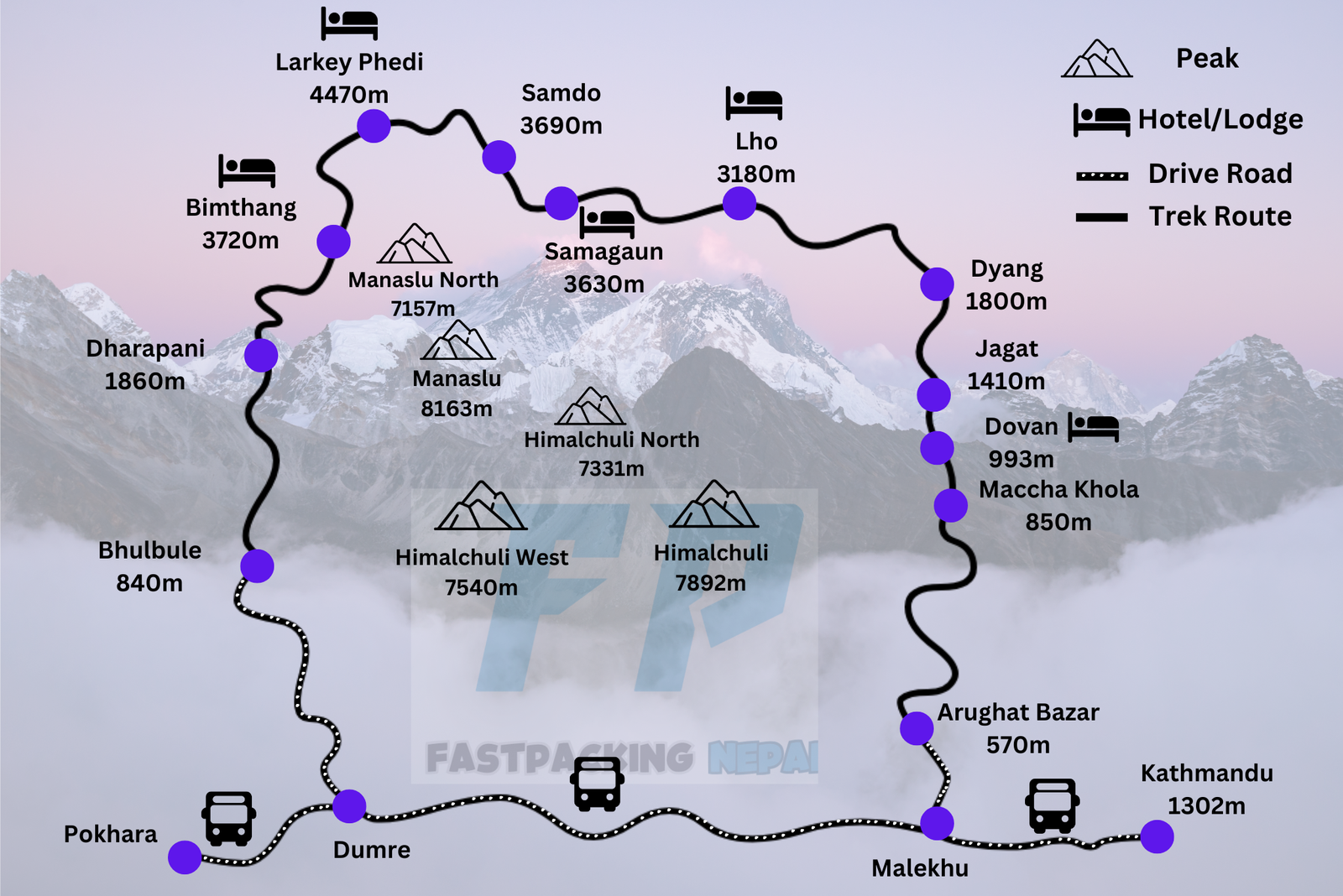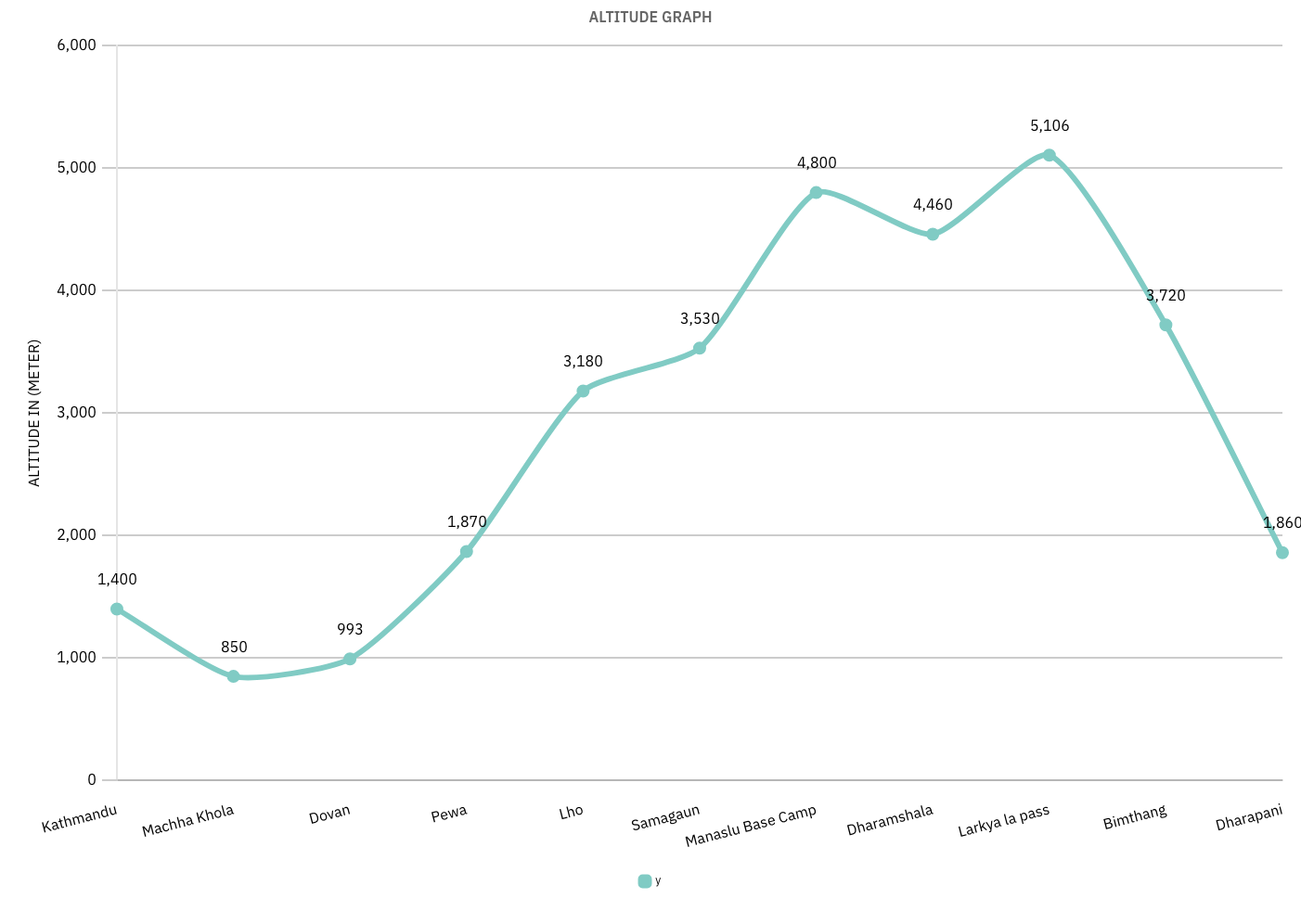Manaslu Circuit Fastpacking
Overview
Fastpacking in Manaslu Circuit lets you move quickly through beautiful, less crowded landscapes than other popular Himalayan treks. This route circles Mount Manaslu, the world’s 8th highest mountain, connecting quiet villages with running over high mountain passes.
You can cover longer daily distances on rarely trekked trails by fastpacking with a light backpack. This allows fastpackers to see more remote sacred sights like the Manaslu Base Camp and Tsum Valley nearby Tibet with their peaceful state and old cultures & traditions.
For hikers who love nature and old cultural customs, with the presence of mountains, the Manaslu Circuit remains one of the best gems to experience the spirit of the Himalayas. Fastpacking here lets you earn immersed time with village people, sweeping views, and personal accomplishments before sharing them with future waves of trekkers. As more trekkers discover it each year, the extraordinary unspoiled path and the true meaning of cultural immersion will become less pristine, so let’s start our Manaslu Fastpacking now!
Fastpacking Description:
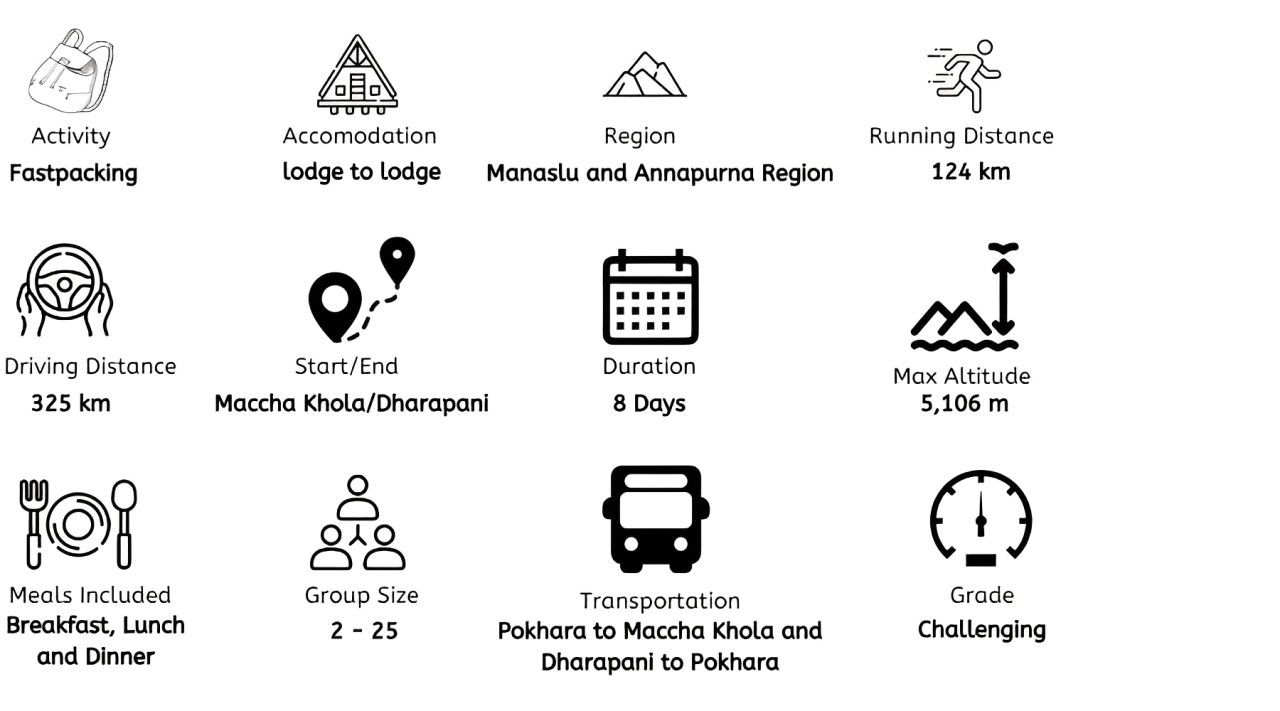
Fastpacking Mansalu Circuit Key Highlights:
- Isolated high-altitude fastpacking route away from crowded trails.
- Cover 20+ km daily to complete the Manaslu Circuit trek in 8 days swiftly.
- Conquer the 5,104m Larkya La Pass and observe the Himalayan vistas.
- Immerse yourself in Buddhist villages and Gompas along the path.
- Witness the countless unnamed 7,000m peaks visible during the trek.
- Fastpack via Tsum Valley, and enjoy the more authentic Tibetan cultures.
- Witness the mesmerizing Annapurna and Manaslu ranges.
- Witness rare wildlife like snow leopards more likely spotted along secluded ridges.
- Experience the region of Manaslu before it gets normalized via overcrowding.
- The feeling of accomplishment after you complete the trek.
Best season for manaslu circuit fastpacking
Manaslu Circuit Fastpack in Spring:(March to May)
- Clear skies, sunshine, and moderate temperatures
- Rhododendron forests in full bloom
- Larkya La Pass may have some snow
- Occasional rainfall in lower regions
Manaslu Circuit Fastpack in Autumn:(Mid-September to November)
- Warm, clear days and cold nights
- Larkya La Pass is usually snow-free
- Post-monsoon trails can be muddy
- Harvest festivals in villages
Manaslu Circuit Fastpack in Summer:(June to August)
- Warm but wet days with leeches
- Risk of landslides and avalanches
- Challenge for experienced trekkers
- Appealing isolation
Manaslu Circuit Fastpack in Winter:(December to February)
- The route from Dharamsala might be closed off if it snows a lot in Larkya La.
- Heavy snowfall, high avalanche risk
- Extreme cold at Larkya La pass
- Larkya La Pass is often impassable due to snow
- Appeal only for hardcore trekkers
- Requires extensive gear and guidance
Manaslu fastpacking itinerary
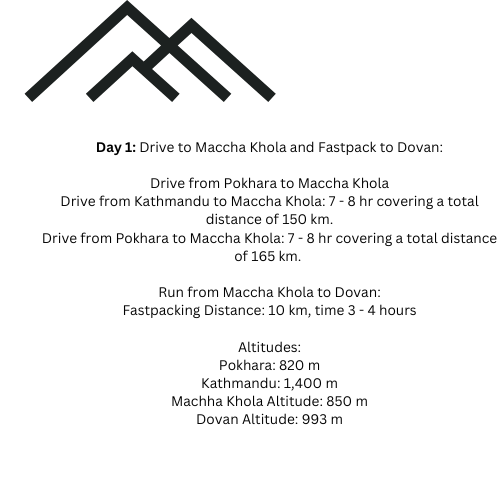
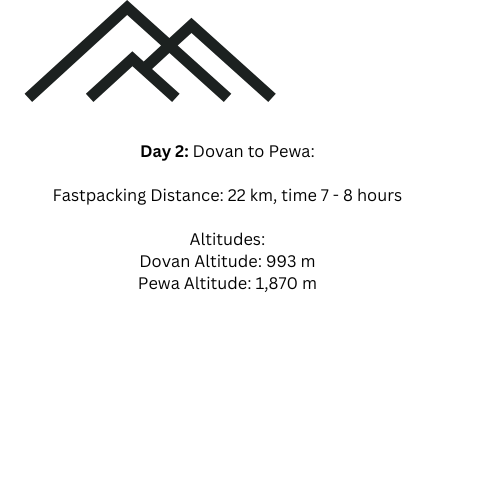

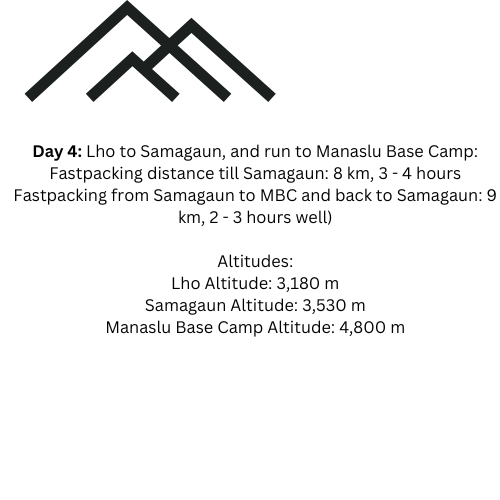
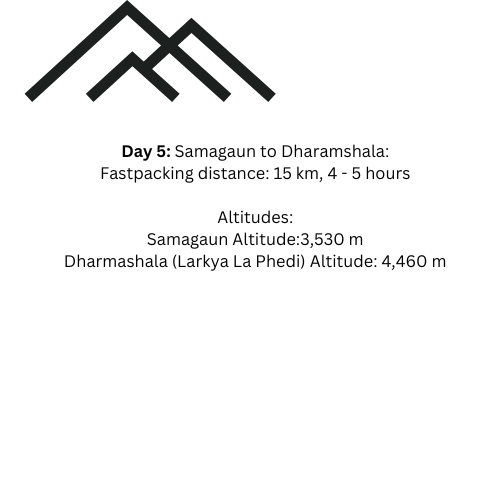
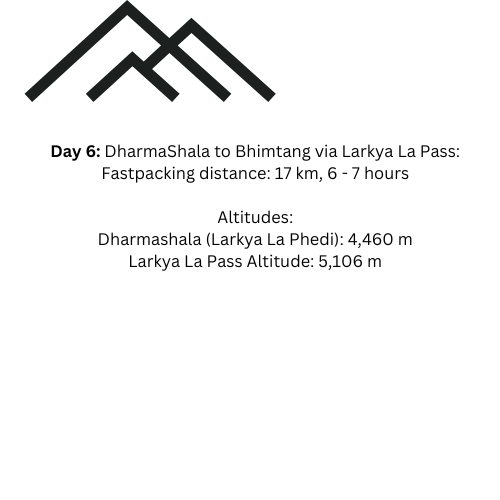
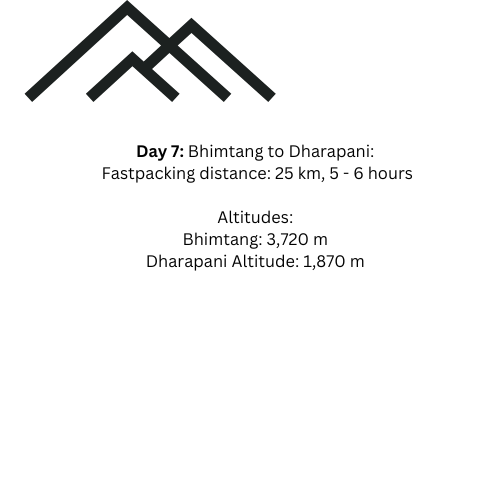
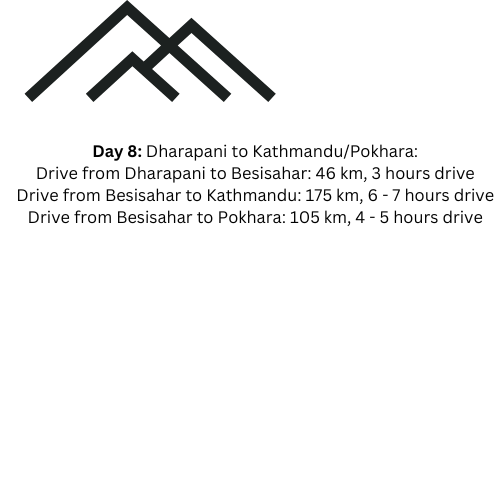
Fastpacking Manaslu Circuit Gears and Accessories:
Clothing top:
Sunglasses
Beanie
Sunhat
Sunscreen
Bandana
Headlamp or Flashlight
Clothing bottom:
Long sleeve and short sleeve shirt, merino wool or synthetic.
Bring a light puffy jacket with a hood and a down jacket.
Light rain shell and wind shell jackets.
Running shorts, Tech pants, Puffy pants.
Sleeping bag
Tech pants and a pair of long underwear instead.
Many pairs of Underwear
Feet:
Normal trail running shoes
Pack 2-3 pairs of socks + one thicker pair for around camp.
Some chemical warmers for when we cross the high altitude passes (usually 3-5 hours).
As we are crossing a 5000m+ pass, pack crampons or microspikes.
Sleeping:
Sleeping Bag for -20°C
Sleeping Liners
As we will sleep in tea houses we don’t need to camp.
Miscellaneous:
A 30l pack for most of our adventures should be more than adequate.
Water bottles and bladders.
Travel medicines.
Set the backup with your medicines.
Personal hygiene kit.
Pocket money Nepali cash.
Passport or photocopy of passport.
Emergency contact sheet.
Physical Preparation and Training:
Endurance
- Build a solid aerobic base by training for at least 4-5 days a week for 30-90 minutes working up to logging miles/hours on feet through running, hiking, cycling, or using the treadmill at an incline.
- As the trek approaches, begin implementing longer workouts (2-4 hours) carrying weight in your daypack while ascending steep hikes or stairs to simulate trail conditions.
- On terrain, the target covers 8-12 miles daily while ascending to 1,000m to train muscles to handle Nepal’s steep mountain trails.
Strength
- Complement endurance workouts with lower body and core strengthening 2-3 days a week. Focus on squats, lunges, deadlifts, planks, and toes to bar. Carry weights/resistance for added difficulty.
- Building leg and glute power helps propel each step while core fitness supports overall posture for carrying packs and prevents injury.
Balance
- Practice balancing poses like single-leg deadlifts and pistol squats which mimic stabilizing steps on uneven mountainous ground.
- Agility drills like lateral hops to build stability are helpful for micro-adjustments placing boots on narrow Himalayan trails.
Running practice
- Practice running with the shoes you are planning for the fastpacking journey.
- Fill your backpack with your clothes, sleeping bags, and other necessities during your training.
- Make sure you have practiced with everything you need during fast packing, just mimic the conditions at least once.
Fastpacking Manaslu Circuit Trek Map and Altitude Chart
